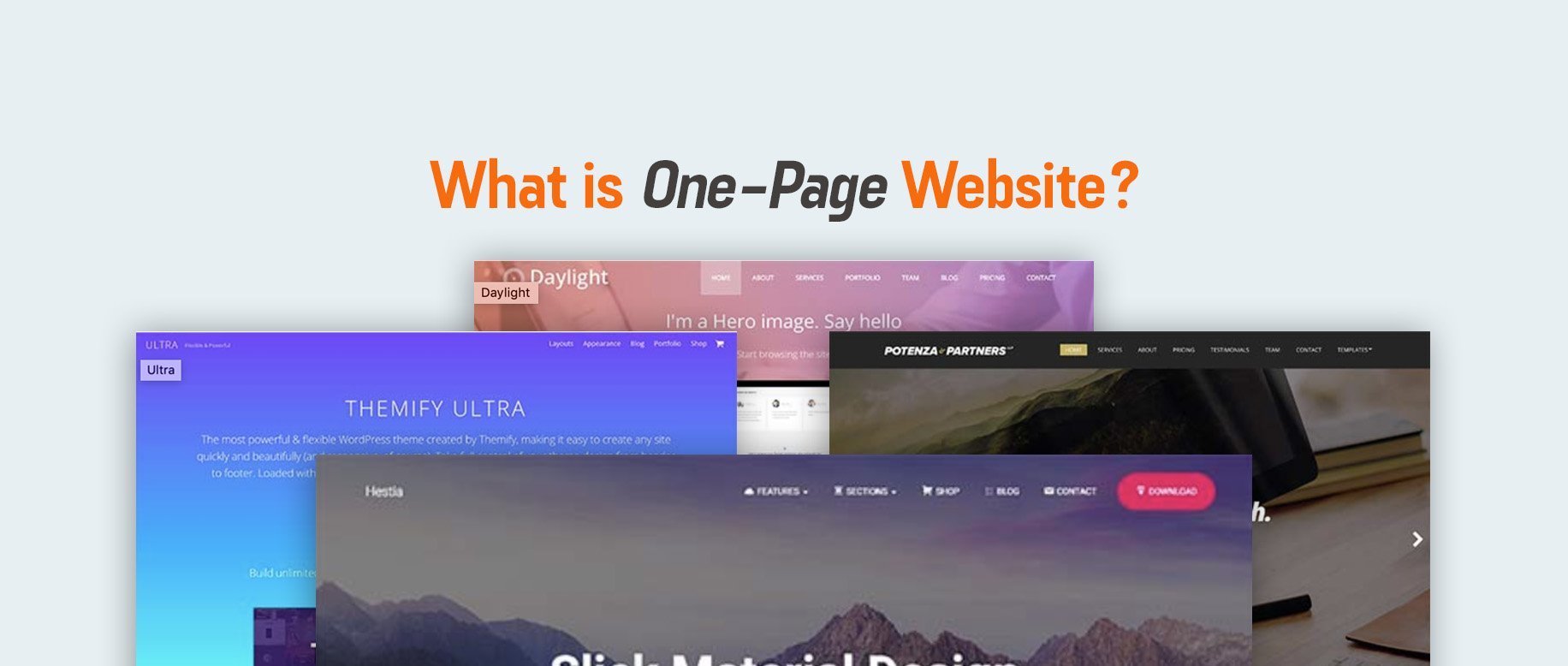Table of Contents
What is One-Page (Single-Page) Website?
A one-page website (also called a single-page, parallax scrolling website) is simply a website that contains only one HTML page. There are no other pages like services, about, and contact pages. A one-page website fully loads when it is browsed making the experience more continuous and fluid for the user.
To navigate to different sections on a single page website, users click navigation links that allow them to jump to destinations on the page, or scroll down the page to reach different sections of content. The layout of the single-page website is image-driven and mobile-friendly, making the user experience relatively simpler. Check out the perfect example of the one-page website demo below.
Features of One-Page Website
- Eas of use
- Focused content
- Designed with the mindset of a higher conversion rate
- Multi-device support
Importance of One-Page Website
Nowadays, simple, speedy and responsive single-page websites are among the most popular web trends to date. Single page websites let the users go through the right information quickly and act on it. This is why single-page design is often used for landing pages, portfolios and event-related websites. Basically single-page website avoids unnecessary elements, pages, and content for the eas of the users.
Statistically speaking, 55% of all users spend just 15 seconds on the website before losing interest and leaving. Less sustained traffic results in a lower conversion rate. Creating a one-page website is nearly always going to be faster than taking the time to create a larger website filled with smaller pages. One page websites are also far easier to maintain when content needs to be updated because it’s all in one, easy-to-find location. Since one page does not contain multiple pages, it tends to be simple and minimal. If you rely heavily upon digital revenue, chances are your cluttered site is hurting you more than it’s helping.
One-Page Website Pros
- It consists of a simple single page.
- One page websites do-not have refresh page feature, which makes the site very user-friendly.
- One-page websites tend to load faster as inbound links are linked to a single page.
- It is simple to understand. One page websites enable simplified brand storytelling.
- Being a simple and user-friendly design, single page websites helps in easier and faster conversion.
- Making some changes to the website is relatively simple and easier.
- The single-page website has a lower bounce rate.
- Websites can be easily used across platforms and devices.
- Cost-effective
One-Page Website Cons
- If there are too many sections then a single page might be too long to scroll.
- One of the key disadvantages of single page websites is that it is very uncommon.
- You can not include a large number of contents.
When to Use a One-Page Website
We have already mentioned the pros and cons of the one-page website. Multi-page designs provide you with far more space to include all the information you want. In other words, they can be as flexible as you need them to be. With that being said, these are the few examples of situations where you can use on-page website
- Mobile Apps Website: Since there will not be much information to give, it is good practice to have a one-page website for an application.
- Portfolios: For a portfolio website, the one-page design is enough to give potential employers a bit of information about who you are, feature finished projects, and even include a simple contact form.
- Landing pages. Limiting yourself to one simple page enables you to craft a narrative without any distractions, and run A/B tests more efficiently. A one-page landing page helps in higher conversion.
- Brochure websites. If your business only needs a simple website with photos, contact information, and an introduction to your services, you don’t need dozens of pages to pull it off.
Let’s Talk From SEO Perspective
While it may seem like having a one-page website is a good thing, but one-page websites do have their drawbacks. Especially when it comes to On-Page Search Engine Optimization (SEO). One-page sites are generally supposed to be designed around one main concept, which limits your ability to rank for a wide variety of keywords.
So, in SEO perspective, the one-page website has following drawbacks
- Keyword Limitation
- Lack of Specific Content
- Lack of Links
To Conclude,
If you depend heavily on Google to find new customers, then you might be better off creating a multi-page site that incorporates different keywords into each page to attract a wider audience. But if Google search isn’t the main priority for your company, the lack of keyword ranking shouldn’t pose a problem. Otherwise, in the above-mentioned situations, you can create a one-page website. Check out 10 Best-One Page Free and Responsive WordPress Themes.
Other Posts:
If you liked this article, then consider following us on Twitter and Facebook and LinkedIn.

